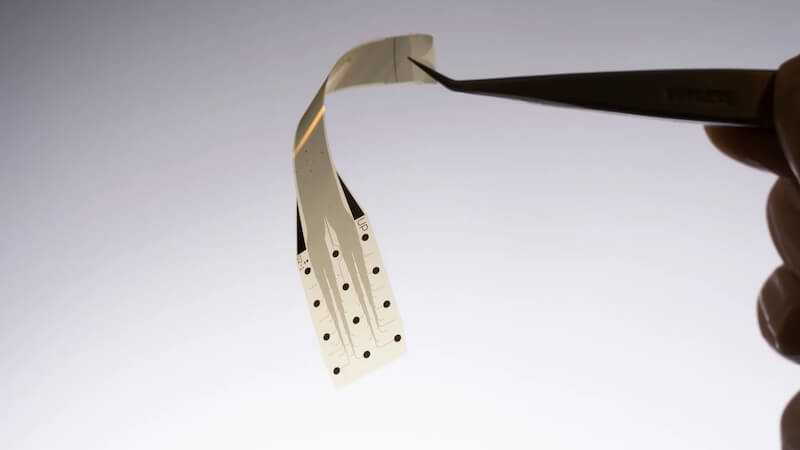
Researchers have developed a graphene implant and implanted it into a human to create a brain-computer interface. It detects brain signals and is intended to help treat neurological diseases such as Parkinson’s.
Will we soon be able to interact with computers using our brains? The Spanish company, among others, is pursuing this goal InBrain Neuroelectronic. For the first time, they successfully tested a new ultra-thin brain implant made of graphene in a human. This is a material consisting of a single layer of carbon atoms and is considered a miracle material.
Because graphene is not only the thinnest, but also one of the strongest materials in the world. InBrain Neuroelectronics developed its implant, among other things, to be able to record and decode signals from the human brain.
Graphene implant delivers promising results
Doctors placed the implant on a patient’s cerebral cortex for 79 minutes during surgery. He had already undergone an operation to remove a brain tumor and agreed to take part in the experiment. In around 80 minutes, the device was able to distinguish which areas of the brain were healthy and which were affected by the tumor.
This shows how precisely it works – at the micrometer level. However, the procedure should not remain a one-off experiment. InBrain plans to further develop the system as a kind of brain-computer interface. Then it could help treat neurological diseases such as Parkinson’s.
Graphene offers many advantages compared to metal
In so-called deep brain stimulation, a method that researchers are already using to treat Parkinson’s, the flexible graphene electrodes could enable more precise and personalized stimulation. Compared to traditional metal electrodes, which are often stiff and inflexible, the graphene implant adapts better to the soft and pulsating structure of the brain.
This prevents potential damage from rigid electrodes, which can irritate the surrounding tissue. Graphene also conducts electricity better than metal, which increases the efficiency of the implant. The approach could represent a promising technology for the treatment of neurological diseases.
Also interesting:
- Using human stem cells: Researchers are building robots with living brains
- Start-up develops living computer from human brain cells
- From water and salt: Researchers are developing artificial synapses that work like the brain
- Mind control: Researchers develop novel brain-computer interface
The post Ultra-thin graphene implant connects human brain with computer by Felix Baumann appeared first on BASIC thinking. Follow us too Facebook, Twitter and Instagram.
As a Tech Industry expert, I am incredibly excited about the potential of ultra-thin graphene implants connecting the human brain to computers. This technology has the potential to revolutionize the way we interact with technology, allowing for seamless communication between the human brain and machines.
The use of graphene, a highly conductive and flexible material, in these implants is a game-changer as it allows for better integration with the brain and reduces the risk of rejection or damage. This means that individuals could potentially control devices, access information, or even communicate with others simply through their thoughts.
However, there are also ethical and privacy concerns that need to be addressed with this technology. It is crucial that proper safeguards are put in place to protect individuals’ privacy and ensure that the technology is used responsibly.
Overall, I believe that ultra-thin graphene implants connecting the human brain to computers have the potential to greatly enhance our lives and push the boundaries of what is possible in the tech industry. It will be exciting to see how this technology develops and how it will impact our future.
Credits